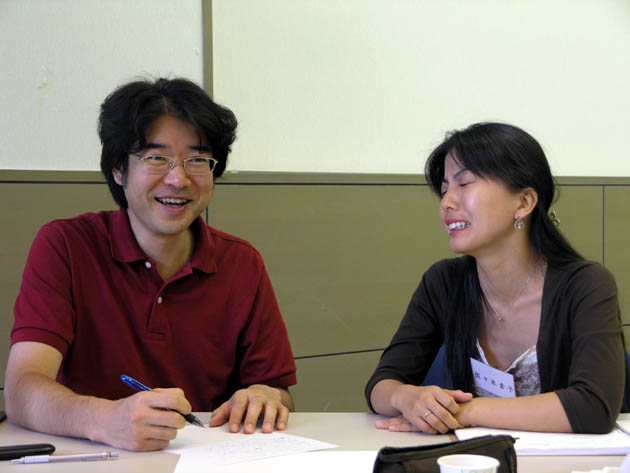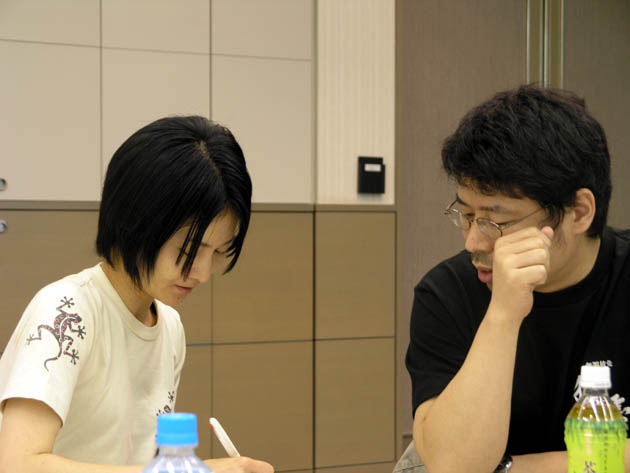I wrote:
We have a unified core of personality; the private meaning. In actual life, however, we use many personas; the private logics. A persona is discrete from other ones, or, in other words, we have limited numbers of the private logics.

As personas are discrete with each other, we can give a name to a persona. A girl felt tense in front of people. For example, it was very difficult for her to read a textbook aloud in the class. I asked her, “Who can read a textbook well in your class?” She said, “Mari does.” I asked her, “Do you like Mari?” She said, “Yes, she is my friend.” I asked her, “Do you think if she helps you?” She said, “How can she help me?” I said, “Okay, you borrow her spirit.” She said, “What? Her spirit!?” I said, “Yes! You can be possessed by her. If you are Mari, how will be your body sensation? Mari’s spirit enters into you. Your body is changing. How do you feel?” She said, “My shoulders are softer.” I said, “Good! And your neck?” She said, “My neck is softer, too.” I said, “How about your stomach?” She said, “Rather hot.” I said, “Good! Now, you are Mari. Read this book aloud.” She did it very well. I said, “Now you have learned how to borrow Mari’s spirit. Call Mari any time you read a textbook aloud.” In this example, the client had a persona before I gave a name. The persona, which is named “Mari’s spirit”, is discrete from the persona she usually used in the classroom. There is no transitional persona between those two. If the persona, “Mari”, is not contradictory with her goal striving, she can use it. We can adopt a different way to the same goal.

The “Empty Chair” method is a typical usage of the persona. A medical doctor had a problem. He was a specialist of gastroenterology. Recently he changed the workplace form a hospital to a public clinic in a rural area, and worked as a general physician. When he worked at the hospital, he was very busy and worked from early morning till late evening. Now, he was able to come home early and to have dinner with the family. He liked to be a specialist, and he also liked to be a good father. The two chairs were set for him; one is the seat of a gastroenterologist, and the other was of a father who worked as a doctor. Changing the seats, two personas discussed together. “You cannot be a specialist again, if you work for the older people at the clinic any longer.” “Yes, I know. But, I am very happy to be with the family.” “Are you going to throw away what you have learned?” “No, I don’t think so. I am now learning something very important as a medical doctor.” After all, he decided to be a general physician. He had two personas, and both of them were on the line to his goal. His goal might be “I should be capable.” The gastroenterologist said, “I will be capable as a specialist.” and the father said, “I will be capable as a good father.” He could not choose both of them at the sama time; the situation was “either-or”. Like this, there is no transitional half. Personas are discrete.
We have many personas within us. When I was a little kid, my grandmother said to me, “Don’t cry! You are a boy!” Feminists may get angry, but I had a persona called, a ‘boy’, already at that time. I stopped crying. I have many other personas; a “father”, “the first born son”, a “teacher”, a “psychotherapist”, a “physician”, etc. Sometimes they make me the “either-or” situation, though their goal is one. On the only private meaning, there are many private logics.
(The persons appearing in the photographs are Japanese Adlerians, and have nothing to do with the contents.)

